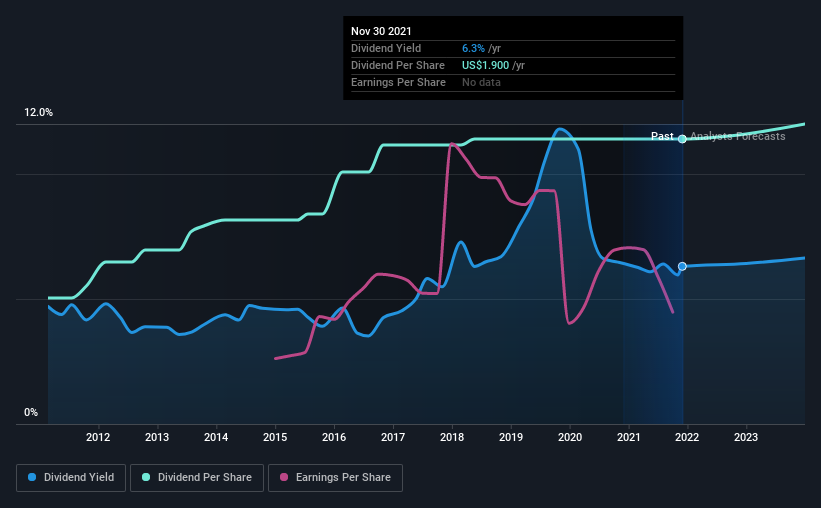B&G Foods (NYSE:BGS) Will Pay A Dividend Of US$0.47
The board of B&G Foods, Inc. (NYSE:BGS) has announced that it will pay a dividend on the 31st of January, with investors receiving US$0.47 per share. This means the annual payment is 6.3% of the current stock price, which is above the average for the industry.
View our latest analysis for B&G Foods
B&G Foods Is Paying Out More Than It Is Earning
While it is great to have a strong dividend yield, we should also consider whether the payment is sustainable. Prior to this announcement, the company was paying out 146% of what it was earning. This situation certainly isn't ideal, and could place significant strain on the balance sheet if it continues.
The next 12 months is set to see EPS grow by 49.6%. However, if the dividend continues growing along recent trends, it could start putting pressure on the balance sheet with the payout ratio reaching 103% over the next year.
B&G Foods Has A Solid Track Record
The company has been paying a dividend for a long time, and it has been quite stable which gives us confidence in the future dividend potential. The first annual payment during the last 10 years was US$0.84 in 2011, and the most recent fiscal year payment was US$1.90. This works out to be a compound annual growth rate (CAGR) of approximately 8.5% a year over that time. Companies like this can be very valuable over the long term, if the decent rate of growth can be maintained.
Dividend Growth May Be Hard To Come By
Some investors will be chomping at the bit to buy some of the company's stock based on its dividend history. Let's not jump to conclusions as things might not be as good as they appear on the surface. In the last five years, B&G Foods' earnings per share has shrunk at approximately 5.8% per annum. If earnings continue declining, the company may have to make the difficult choice of reducing the dividend or even stopping it completely - the opposite of dividend growth. However, the next year is actually looking up, with earnings set to rise. We would just wait until it becomes a pattern before getting too excited.
B&G Foods' Dividend Doesn't Look Sustainable
In summary, while it's good to see that the dividend hasn't been cut, we are a bit cautious about B&G Foods' payments, as there could be some issues with sustaining them into the future. We can't deny that the payments have been very stable, but we are a little bit worried about the very high payout ratio. This company is not in the top tier of income providing stocks.
Investors generally tend to favour companies with a consistent, stable dividend policy as opposed to those operating an irregular one. Still, investors need to consider a host of other factors, apart from dividend payments, when analysing a company. Just as an example, we've come across 4 warning signs for B&G Foods you should be aware of, and 2 of them are concerning. We have also put together a list of global stocks with a solid dividend.
Have feedback on this article? Concerned about the content? Get in touch with us directly. Alternatively, email editorial-team (at) simplywallst.com.
This article by Simply Wall St is general in nature. We provide commentary based on historical data and analyst forecasts only using an unbiased methodology and our articles are not intended to be financial advice. It does not constitute a recommendation to buy or sell any stock, and does not take account of your objectives, or your financial situation. We aim to bring you long-term focused analysis driven by fundamental data. Note that our analysis may not factor in the latest price-sensitive company announcements or qualitative material. Simply Wall St has no position in any stocks mentioned.

 Yahoo Finance
Yahoo Finance 
